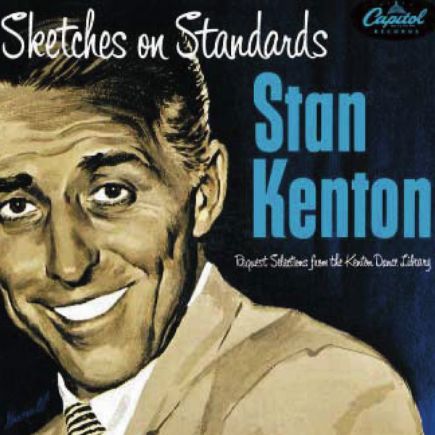Fascinating Rhythm: énergie moderne et passerelle entre jazz et Broadway
Écrite en 1924 par George Gershwin, sur des paroles de son frère Ira, Fascinating Rhythm fait son entrée remarquée dans la comédie musicale Lady Be Good, portée à Broadway par Fred et Adele Astaire aux côtés de Cliff Edwards. Deux ans plus tard, en avril 1926, le duo Astaire enregistre une version à Londres avec George Gershwin lui-même au piano, scellant l’une des premières grandes réussites du songwriting américain.
Dès sa création, Fascinating Rhythm s’impose par son audace rythmique et son inventivité formelle. Son effervescence musicale devient le reflet sonore des Années folles, période de bouleversements culturels, sociaux et artistiques, dont le jazz fut l’un des principaux catalyseurs.
Au-delà de ses qualités musicales, Fascinating Rhythm a joué un rôle déterminant dans la diffusion du langage jazz dans le théâtre musical. Interprété tant sur les scènes de Broadway que dans les clubs de jazz, le morceau a contribué à abolir les frontières entre musique populaire et culture savante, entre divertissement et innovation.
L’histoire discographique de la chanson illustre aussi sa longévité exceptionnelle. Tony Bennett, qui l’avait enregistrée pour la première fois en 1949, en a livré une nouvelle version en 2018 en duo avec Diana Krall. Ce réenregistrement, réalisé près de soixante-dix ans après le premier, détient aujourd’hui le record mondial Guinness du plus long intervalle entre deux versions du même titre par un même artiste.
L’énergie savante de Stan Kenton
Enregistrée à Hollywood le 30 janvier 1953 pour l’album Sketches on Standards, cette version de Fascinating Rhythm illustre à merveille la capacité de Stan Kenton à revisiter le répertoire classique du jazz américain en lui conférant une ampleur orchestrale inédite.
À la tête de son orchestre, Kenton déploie un art de l’arrangement qui combine rigueur harmonique et puissance rythmique. Loin de se contenter d’un simple hommage, il transforme la pièce en une construction symphonique, où les cuivres éclatants et les bois raffinés s’unissent à une section rythmique énergique, fidèle à l’esprit du titre. Le Kenton Sound, caractérisé par ses harmonies élargies, ses dissonances contrôlées et son sens du contraste, confère à la composition des couleurs nouvelles, entre éclat et tension.
Le piano de Kenton agit comme un moteur de cohésion, imposant un cadre solide à la complexité de l’ensemble. La pulsation, à la fois métronomique et souple, soutient un dialogue constant entre la tradition du swing et la modernité harmonique du jazz des années 1950.
Les solos, courts mais percutants, se distinguent par une intensité remarquable, en particulier celui du tromboniste Frank Rosolino, oscillant avec élégance entre lyrisme et éclat. Ce mélange de précision et de liberté donne à Fascinating Rhythm une intensité rare, où la virtuosité instrumentale se met au service de la clarté du discours musical.
Fascinating Rhythm: energía moderna y puente entre el jazz y Broadway
Escrita en 1924 por George Gershwin, con letra de su hermano Ira, Fascinating Rhythm hizo su entrada triunfal en el musical Lady Be Good, llevado a Broadway por Fred y Adele Astaire junto a Cliff Edwards. Dos años después, en abril de 1926, el dúo Astaire grabó una versión en Londres con el propio George Gershwin al piano, sellando uno de los primeros grandes éxitos del songwriting estadounidense.
Desde su estreno, Fascinating Rhythm se impuso por su audacia rítmica y su inventiva formal. Su efervescencia musical se convirtió en el reflejo sonoro de los Años locos, una época de profundos cambios culturales, sociales y artísticos, en la que el jazz fue uno de los principales motores.
Más allá de sus cualidades musicales, Fascinating Rhythm desempeñó un papel decisivo en la difusión del lenguaje del jazz en el teatro musical. Interpretada tanto en los escenarios de Broadway como en clubes de jazz, la pieza contribuyó a romper las fronteras entre música popular y cultura académica, entre entretenimiento e innovación.
La historia discográfica de la canción también ilustra su longevidad excepcional. Tony Bennett, que la había grabado por primera vez en 1949, ofreció una nueva versión en 2018 en dúo con Diana Krall. Esta regrabación, realizada casi setenta años después de la original, ostenta hoy el récord Guinness mundial por el mayor intervalo entre dos versiones del mismo tema grabadas por un mismo artista.
La energía refinada de Stan Kenton
Grabada en Hollywood el 30 de enero de 1953 para el álbum Sketches on Standards, esta versión de Fascinating Rhythm ilustra de manera ejemplar la capacidad de Stan Kenton para reinterpretar el repertorio clásico del jazz estadounidense, otorgándole una amplitud orquestal sin precedentes.
Al frente de su orquesta, Kenton despliega un arte del arreglo que combina rigor armónico y potencia rítmica. Lejos de limitarse a un simple homenaje, transforma la pieza en una construcción sinfónica donde los metales resplandecientes y las maderas refinadas se funden con una sección rítmica enérgica, fiel al espíritu del título. El Kenton Sound, caracterizado por sus armonías expandidas, disonancias controladas y un agudo sentido del contraste, confiere a la composición nuevos colores, entre brillo y tensión.
El piano de Kenton actúa como un motor de cohesión, imponiendo una estructura sólida a la complejidad del conjunto. La pulsación, al mismo tiempo meticulosa y flexible, sostiene un diálogo constante entre la tradición del swing y la modernidad armónica del jazz de los años cincuenta.
Los solos, breves pero intensos, destacan por su fuerza expresiva, especialmente el del trombonista Frank Rosolino, que oscila con elegancia entre lirismo y brillantez. Esta combinación de precisión y libertad otorga a Fascinating Rhythm una intensidad singular, donde la virtuosidad instrumental se pone al servicio de la claridad musical.
Fascinating Rhythm: energia moderna e ponte tra jazz e Broadway
Scritta nel 1924 da George Gershwin, con testo del fratello Ira, Fascinating Rhythm fece il suo debutto trionfale nel musical Lady Be Good, portato a Broadway da Fred e Adele Astaire insieme a Cliff Edwards. Due anni più tardi, nell’aprile del 1926, il duo Astaire ne registrò una versione a Londra con lo stesso George Gershwin al pianoforte, sancendo uno dei primi grandi successi del songwriting americano.
Fin dalla sua creazione, Fascinating Rhythm si impone per l’audacia ritmica e l’inventiva formale. La sua effervescenza musicale diventa il riflesso sonoro dei ruggenti anni Venti, un periodo di profondi sconvolgimenti culturali, sociali e artistici, di cui il jazz fu uno dei principali protagonisti.
Al di là delle sue qualità musicali, Fascinating Rhythm ha svolto un ruolo determinante nella diffusione del linguaggio jazzistico nel teatro musicale. Eseguito tanto sui palcoscenici di Broadway quanto nei jazz club, il brano ha contribuito ad abbattere le barriere tra musica popolare e cultura colta, tra intrattenimento e innovazione.
La storia discografica della canzone testimonia anche la sua eccezionale longevità. Tony Bennett, che la incise per la prima volta nel 1949, ne ha proposto una nuova versione nel 2018 in duo con Diana Krall. Questa reincisione, realizzata quasi settant’anni dopo la prima, detiene oggi il record mondiale Guinness per il più lungo intervallo tra due versioni dello stesso brano incise dallo stesso artista.
L’energia raffinata di Stan Kenton
Registrata a Hollywood il 30 gennaio 1953 per l’album Sketches on Standards, questa versione di Fascinating Rhythm mostra perfettamente la capacità di Stan Kenton di reinterpretare il repertorio classico del jazz americano conferendogli un’ampiezza orchestrale senza precedenti.
Alla guida della sua orchestra, Kenton rivela un’arte dell’arrangiamento che unisce rigore armonico e potenza ritmica. Lungi dal limitarsi a un semplice omaggio, trasforma il brano in una costruzione sinfonica in cui gli ottoni brillanti e i legni raffinati si fondono con una sezione ritmica energica, fedele allo spirito del titolo. Il Kenton Sound, caratterizzato da armonie ampliate, dissonanze controllate e un marcato senso del contrasto, dona alla composizione nuove sfumature, tra luminosità e tensione.
Il pianoforte di Kenton funge da motore di coesione, imponendo una struttura solida alla complessità dell’insieme. La pulsazione, al tempo stesso metronomica e flessibile, sostiene un dialogo continuo tra la tradizione dello swing e la modernità armonica del jazz degli anni Cinquanta.
I soli, brevi ma incisivi, si distinguono per un’intensità straordinaria, in particolare quello del trombonista Frank Rosolino, che oscilla con eleganza tra lirismo e brillantezza. Questa fusione di precisione e libertà conferisce a Fascinating Rhythm un’intensità rara, dove la virtuosità strumentale è al servizio della chiarezza musicale.
Fascinating Rhythm: modern energy and a bridge between jazz and Broadway
Written in 1924 by George Gershwin, with lyrics by his brother Ira, Fascinating Rhythm made a striking debut in the musical Lady Be Good, brought to Broadway by Fred and Adele Astaire alongside Cliff Edwards. Two years later, in April 1926, the Astaire duo recorded a version in London with George Gershwin himself at the piano, marking one of the first major successes of American songwriting.
From its very premiere, Fascinating Rhythm stood out for its rhythmic boldness and formal inventiveness. Its musical effervescence became the sonic reflection of the Roaring Twenties—a time of sweeping cultural, social, and artistic change, with jazz as one of its main driving forces.
Beyond its musical qualities, Fascinating Rhythm played a key role in spreading the language of jazz within musical theatre. Performed both on Broadway stages and in jazz clubs, the piece helped blur the lines between popular music and high culture, between entertainment and innovation.
The song’s discographic history also illustrates its remarkable longevity. Tony Bennett, who first recorded it in 1949, released a new version in 2018 as a duet with Diana Krall. This re-recording, made nearly seventy years after the original, currently holds the Guinness World Record for the longest interval between two versions of the same song by the same artist.
The refined energy of Stan Kenton
Recorded in Hollywood on January 30, 1953, for the album Sketches on Standards, this version of Fascinating Rhythm perfectly showcases Stan Kenton’s ability to reinterpret the classic repertoire of American jazz, giving it an unprecedented orchestral breadth.
At the head of his orchestra, Kenton displays an art of arrangement that combines harmonic rigor with rhythmic power. Far from offering a simple tribute, he transforms the piece into a symphonic construction, where brilliant brass and refined woodwinds merge with an energetic rhythm section true to the spirit of the title. The Kenton Sound, marked by expanded harmonies, controlled dissonances, and a keen sense of contrast, lends the composition new colors—at once radiant and tense.
Kenton’s piano serves as a cohesive force, providing a solid framework for the ensemble’s complexity. The pulse, both metronomic and supple, sustains a constant dialogue between swing tradition and the harmonic modernity of 1950s jazz.
The solos, brief yet striking, stand out for their expressive intensity—especially that of trombonist Frank Rosolino, who moves gracefully between lyricism and brilliance. This blend of precision and freedom gives Fascinating Rhythm a rare intensity, where instrumental virtuosity serves the clarity of musical expression.


